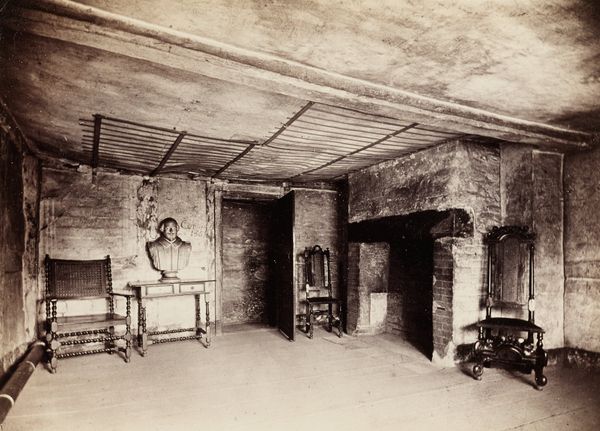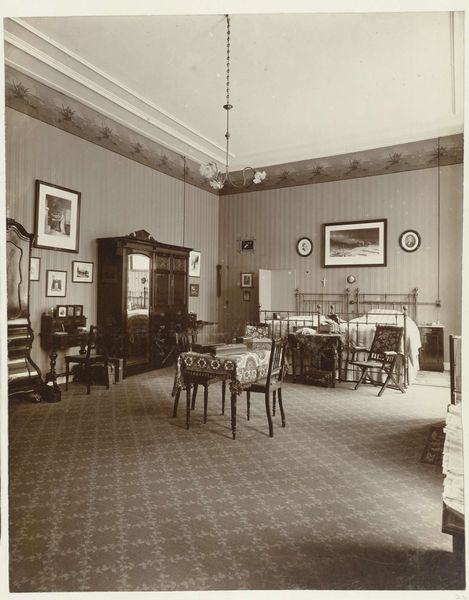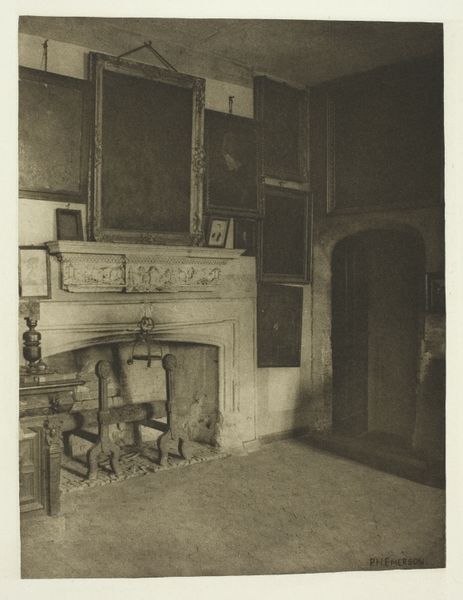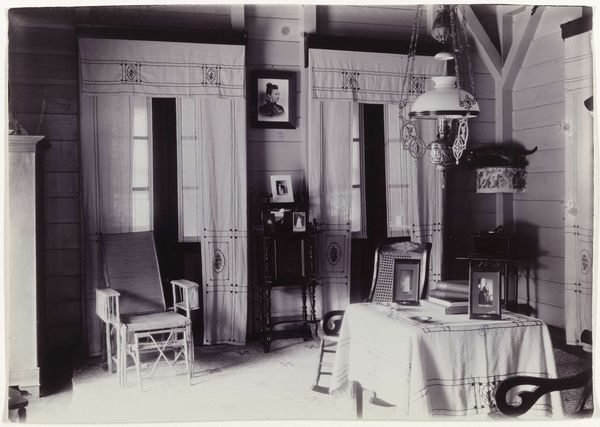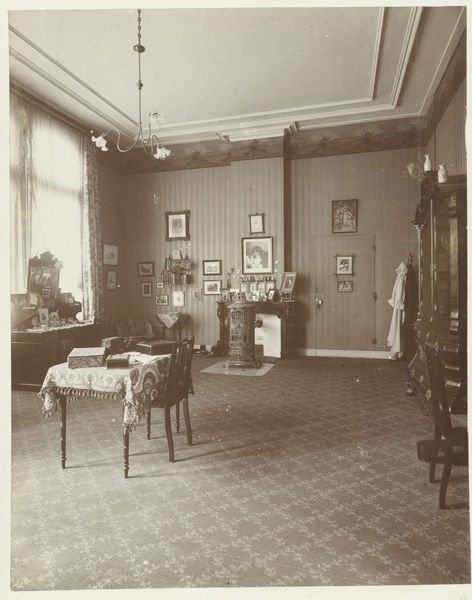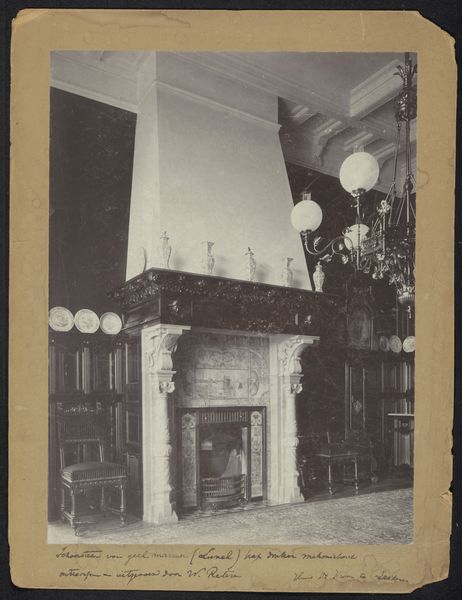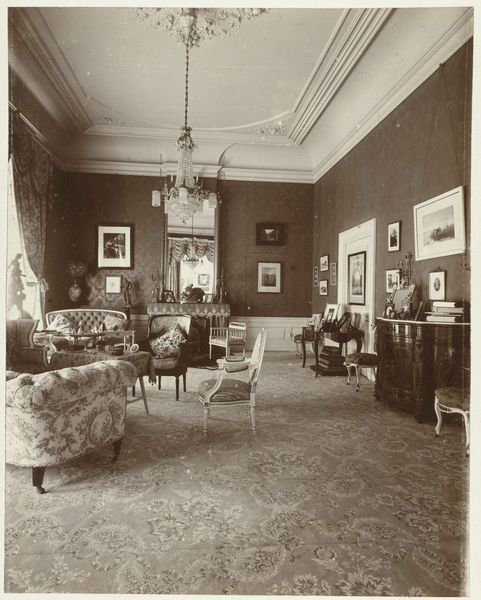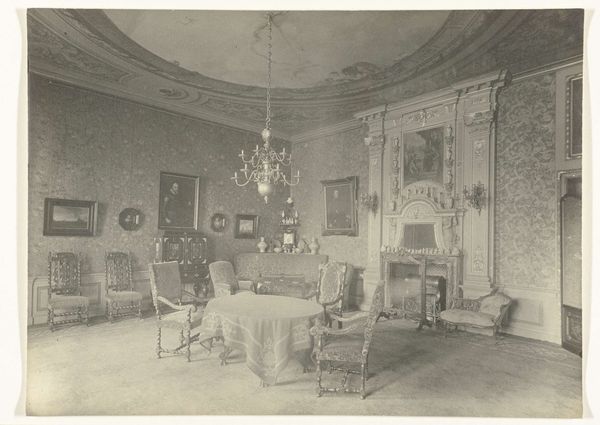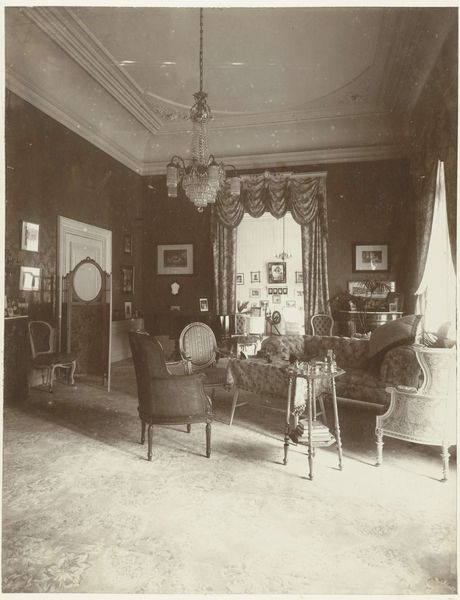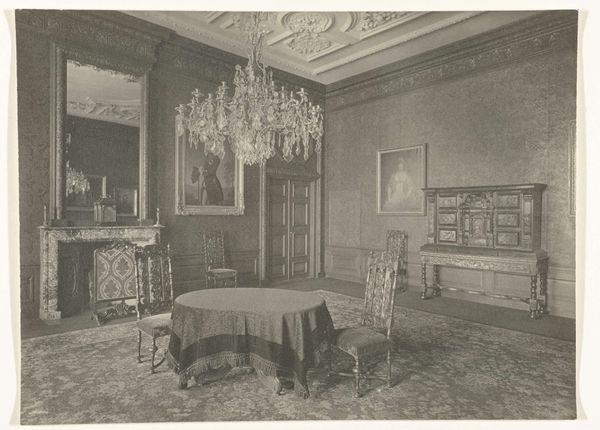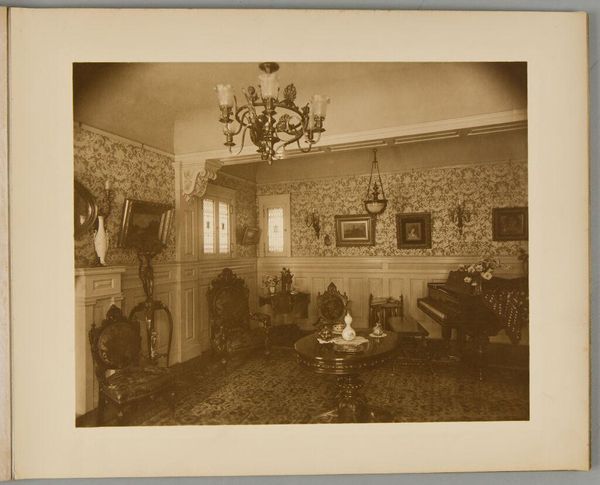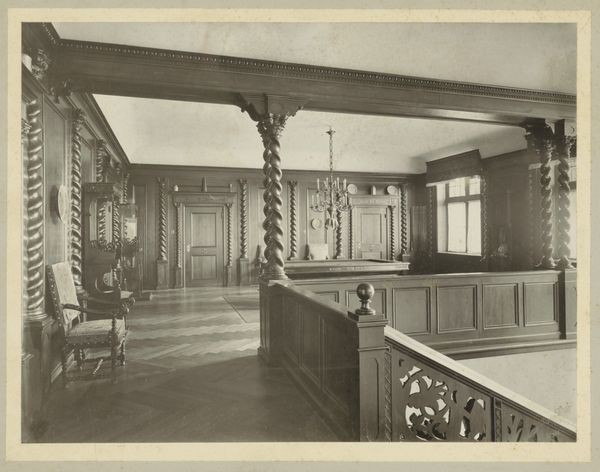
photography, glass
#
16_19th-century
#
pictorialism
#
arts-&-crafts-movement
#
landscape
#
photography
#
glass
#
england
Dimensions: 8.2 × 8.2 cm
Copyright: Public Domain
Curator: Frederick H. Evans made this photograph, "Kelmscott Manor: The Green Room," in 1896. Editor: It strikes me as profoundly still, almost a stage set waiting for actors. You immediately notice the light falling into the space from the unseen windows. There’s a weight to it too. Curator: Kelmscott Manor was William Morris's beloved country house. This image encapsulates many key Arts and Crafts ideals through capturing the materiality and artistry found in everyday life. Look at the hand-printed textile patterns used for the curtains and walls, their symbolic resonance with nature and medievalism... Editor: That textile feels key—the means of production and the labour involved. It screams "handmade" as a contrast to the rapidly industrializing world outside the walls of Kelmscott. I wonder about the dye processes, where did these colourants originate? Were they expensive? This impacts my reading of this otherwise quiet room. The placement of objects, and their purpose... How conscious was Evans in portraying these class divides, or just purely documenting his contemporary society? Curator: Evans was invested in pictorialism, aiming for artistic effect by manipulating photographic processes. He sought a deeper truth. The photograph becomes less about literal documentation, and more about invoking emotional response—the feeling of a space and its history. The emptiness evokes contemplation. Consider the placement of the chairs: it suggests absent figures and latent possibilities. And the large, darkened cavity of the fireplace—isn’t it reminiscent of the pre-industrial era's emphasis on home and hearth? Editor: The light through the window creates those striking shadows and highlights—see the patterns picked out across the carpet and on the wooden mantle of the fireplace? I am especially curious about this particular view that the photographer has decided to showcase. What are the social functions of "the green room?" Why this room, in this very instant? Was this some elaborate arrangement, or was he truly just snapping an environment? I think both of those extremes are valid, just pondering here, as someone very conscious of photography as its own production with labor and purpose behind it. Curator: It makes one consider not only the symbolic meaning, but the experience. It seems Evans has successfully captured this house not as mere bricks and mortar, but as a reservoir of feeling. Editor: Indeed. Looking through a modern lens makes me want to excavate what isn't represented here, what gets conveniently left outside of the shot and consideration in an artistic approach like this one.
Comments
No comments
Be the first to comment and join the conversation on the ultimate creative platform.

